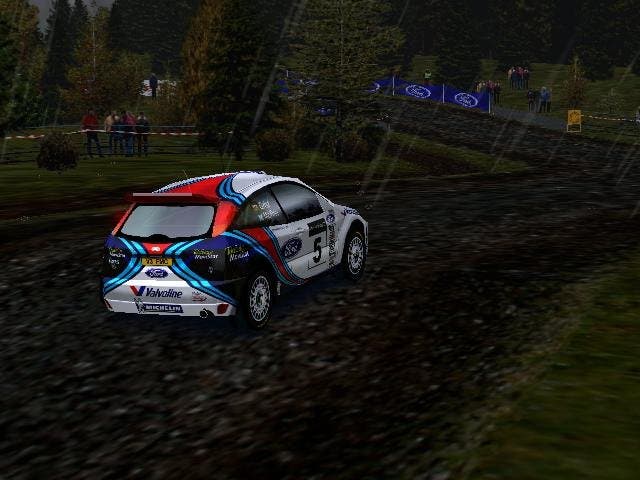Series Retrospective: Colin McRae Rally
Definitely flat out.
Colin McRae Rally (1998)
PC, PlayStation
The success of the first Colin McRae Rally game can be attributed to a combination of factors not even Max Clifford could have engineered. Aside from the already-mentioned popularity of the McRae/Impreza marriage and the WRC enjoying some of its best years in terms of car manufacturer support, media coverage and audience numbers, 1998 also marked the height of the PlayStation explosion. Crucially, CMR further gained from following in the tracks of TOCA Touring Car Championship. Released the previous year, TOCA had convinced a public too fond of arcade-like racing experiences that not only were sim-based driving titles on console a possibility, they could be thrilling, too.
Not that Colin McRae Rally is as simulation-heavy as its touring car predecessor - the SEGA Rally influence is evident - but its handling, although light by the series' later standards, was clearly a couple of turns on from the arcade crowd of the time. The game's 50-odd stages spread across typical WRC international locations give ample opportunity to sample the then-remarkable subtlety of the handling dynamics.
Where realism played the biggest role, however, was in the structure. While other rally games bastardised the core concept of the sport by transplanting the fundamentals of circuit racing - that's a pack of cars vying to be first to cross the chequered flag - into their creation as a way of spicing things up, CMR was having none of that nonsense. Adopting the 'one car, one stage' nature of rallying could have been costly, not least in the danger of turning the experience into a dull series of time trials, but an inspired decision to divide stages up into eight segments - with each checkpoint revealing a player's position against competitors in real-time - resulted in a hugely intense digital motorsport experience.
Other real-world inclusions such as Super Special Stages, running a specified set-up and any damage incurred through a number of stages in between returns to the service area (where any repairs eat up varying chunks out of the allocated servicing time) may seem obvious now, but they were then unusual and served to cement the game as the definitive rally title of its day.
Colin McRae Rally 2.0 (2000)
Dreamcast, PC, PlayStation

If CMR had taken SEGA Rally as a loose blueprint, its sequel crumpled up the plans, threw them in the bin and then lit a match. Colin McRae Rally 2.0's determination to outperform its predecessor is almost palpable, with a completely overhauled (and still very impressive) handling system benefiting from independent wheel suspension and individual tyre friction values, for instance, as well as considerably more input from McRae himself with regards to how the cars should behave on the different surfaces of the beautifully rendered stages.
The cosmetic improvements had gameplay implications, too. With vehicle polygon counts nearly double those of the first outing (on PlayStation) the damage model effortlessly outclassed that of the closest competition and added hugely to the already tense atmosphere. Additional notable achievements in sound and a stylishly redesigned presentation gave excellent indications of other areas Codemasters' rally series would become renowned for.
But they would also mark the tracks the McRae games would increasingly follow. One obvious criticism of CMR 2.0 is its reluctance to compromise its real-world stance - fine if you're prepared to put the effort in but excessively challenging for many who mourned the original's more fun-flavoured approach (although well-intentioned, the game's Arcade mode is a poor substitute). For the hardcore CMR crowd, though, the heightened focus was a revelation - those that conquered CMR 2.0 were rewarded in a manner few driving games manage.
Colin McRae Rally 3 (2002)
PC (2003), PS2, Xbox

Aside from the more mainstream offerings of Infogrames' V-Rally series, the first CMR titles had the whole rally game road to themselves. By the time the franchise's third revved up, however, Evolution's World Rally Championship title had been running since 2001. It was a commendable, if ultimately inferior, effort but the official licence combined with publisher Sony's marketing clout ensured the competition faced was fierce - Colin McRae Rally 3's prequels might have sold in excess of 4.5 million units but brand strength alone offered no guarantee of similar success.








